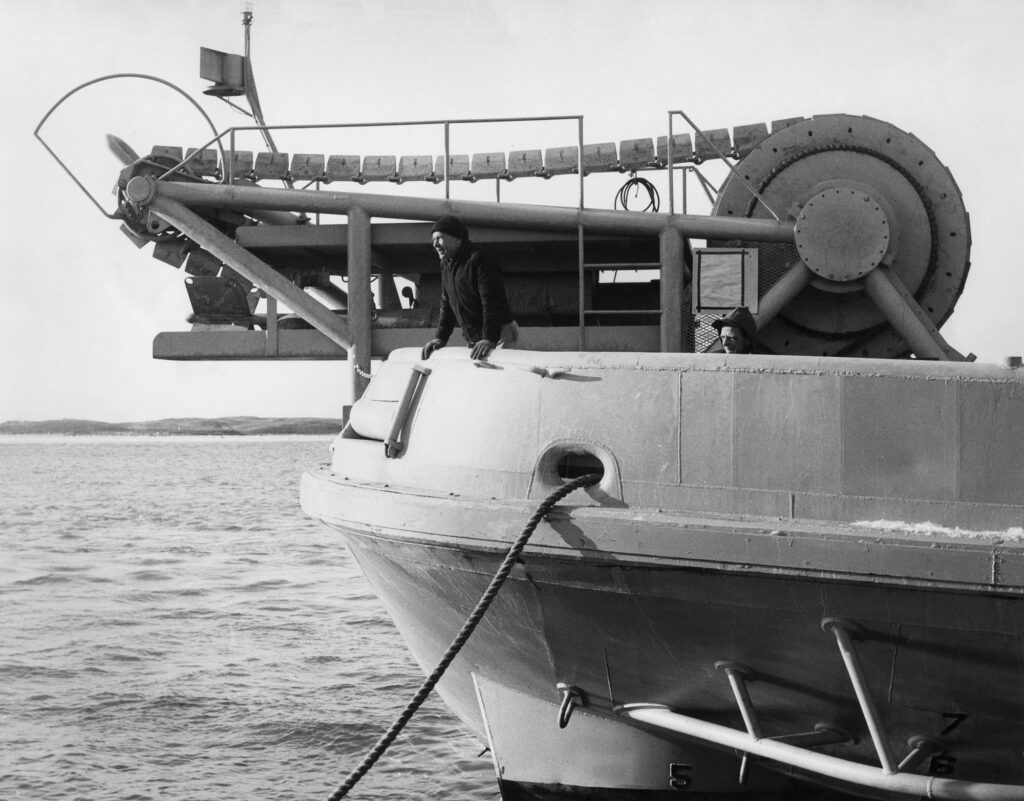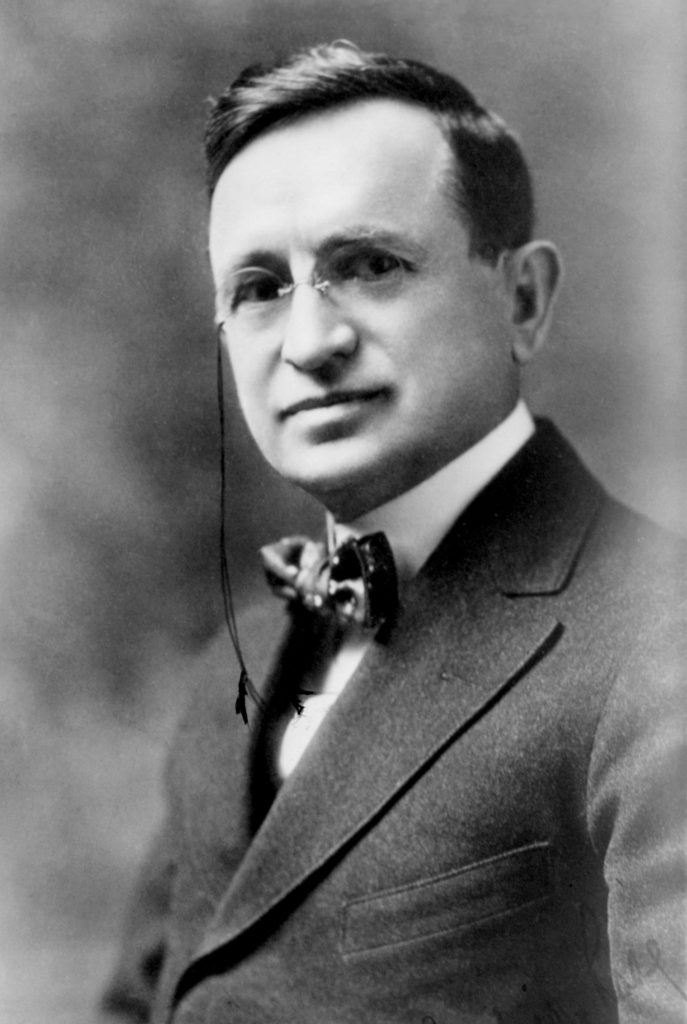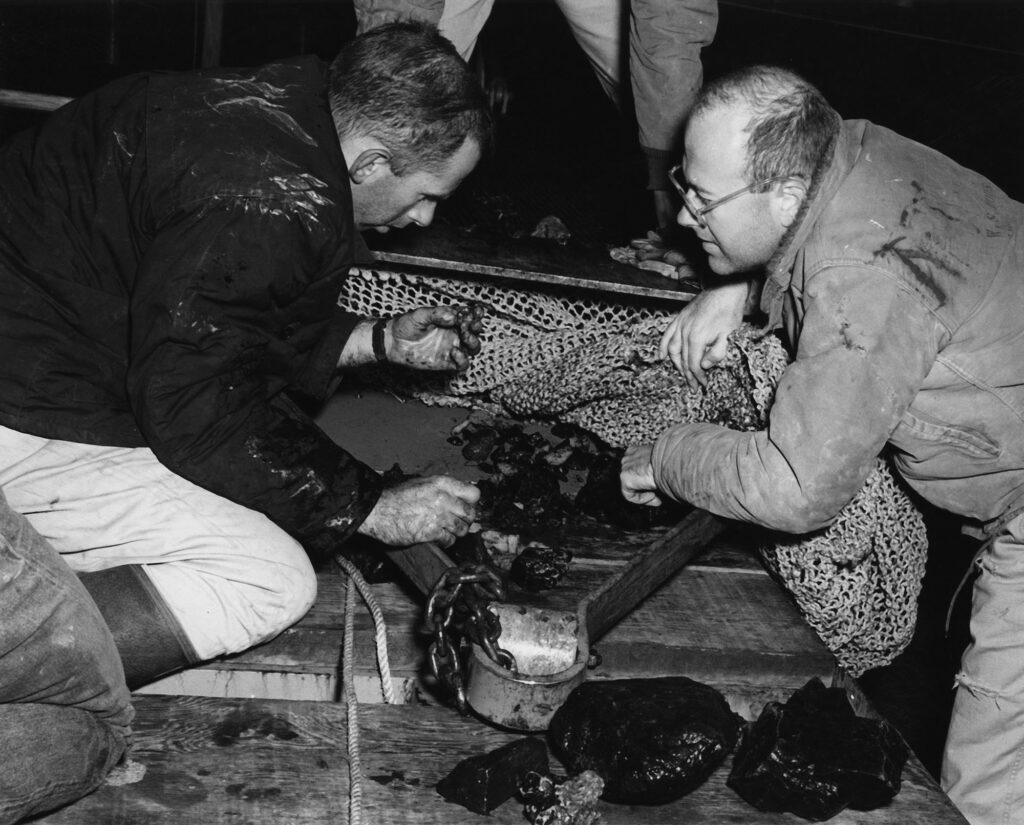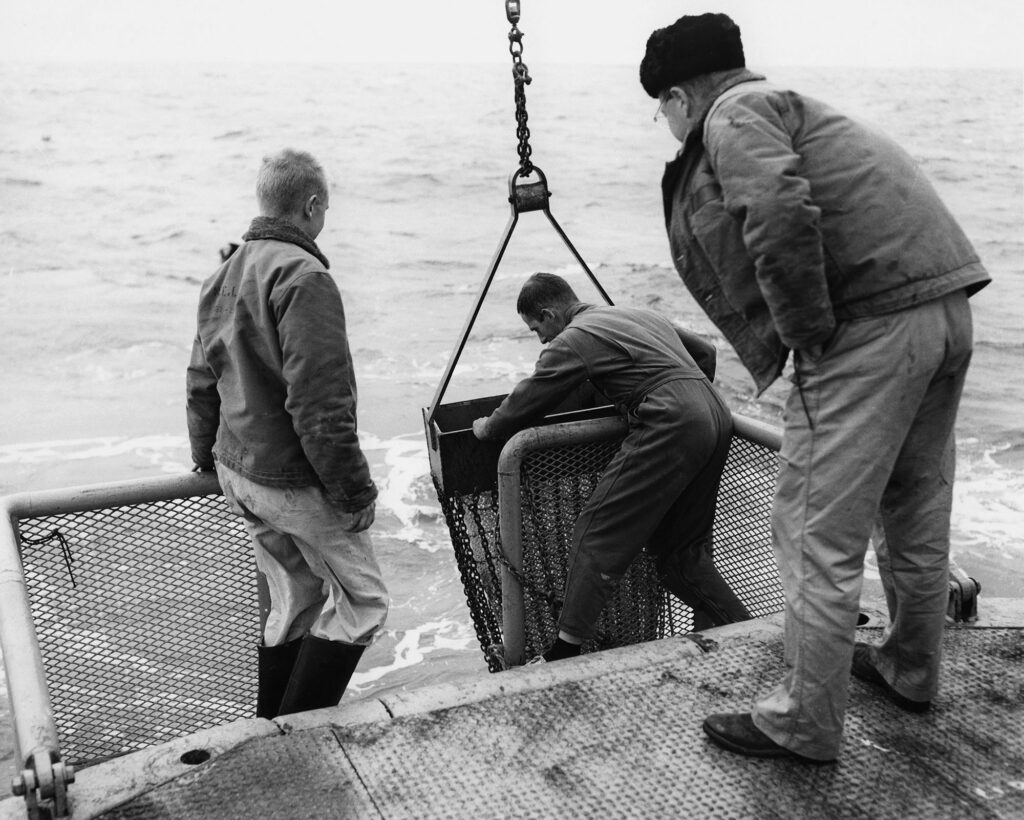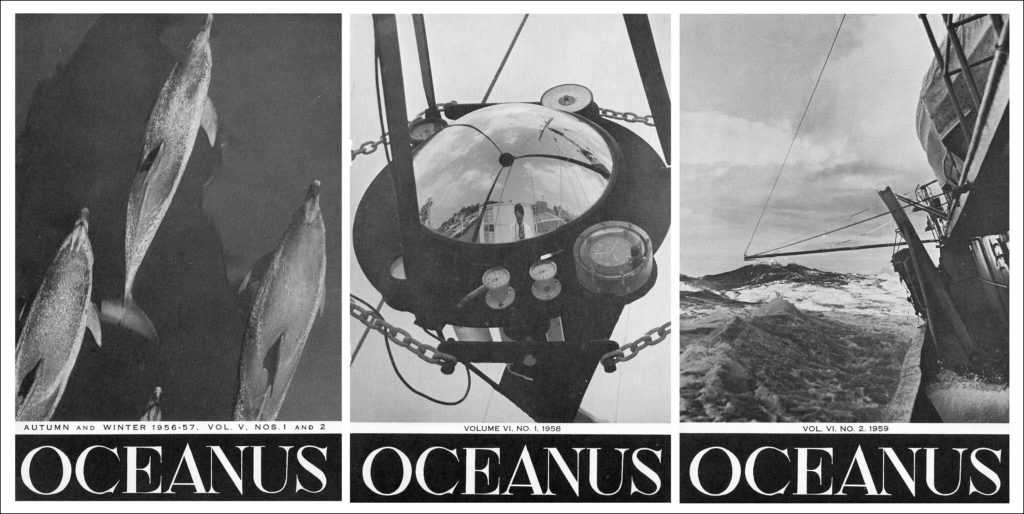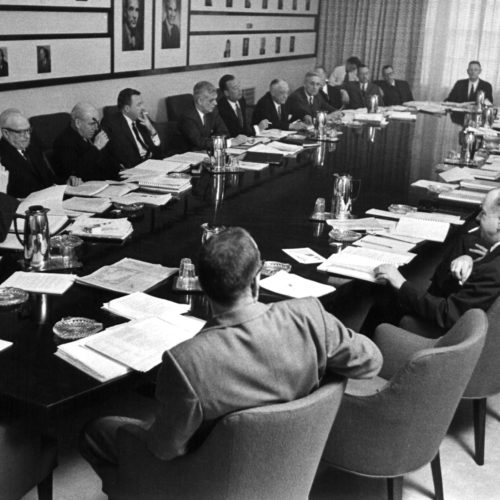A Broad and Interdisciplinary Field
The oceans and their resources have long been the subject of scientific research. A broad field, oceanography as we now know it combines various disciplines including biology, physics, ecology, chemistry, and geology. But it was not always the robust, holistic, and globally-oriented scientific field that it is today.
In the early twentieth century, the study of oceans as an area of science sparked an interest among philanthropists, including John D. Rockefeller, Jr., and among foundations, including the Carnegie Corporation of New York, and the Rockefeller Foundation. In those early decades, the Rockefeller Foundation played a pivotal role in establishing the field of oceanography, including providing major support for the Marine Biological Laboratory in Woods Hole, Massachusetts, the Woods Hole Oceanographic Institution and the Scripps Institution of Oceanography in La Jolla, California (formerly the Scripps Institution for Biological Research).
One Rockefeller Foundation staff member, Wickliffe Rose, in the early twentieth century set out to strengthen and legitimize oceanography. Through founding or strengthening major oceanographic institutions in the United States, Rockefeller Foundation staff, partner organizations, and the scientists themselves sought ways to collaborate on an international scale.
RF involvement with oceanography dated from its first decade of philanthropic work. In 1922, it made a major grant of $500,000 to the MBL for a new building and an endowment. Additional funding for the MBL’s $1,000,000 plan came from the Carnegie Corporation and from a personal donation by John D. Rockefeller, Jr. (JDR Jr.). The RF similarly aided the NZS as the station struggled to re-establish itself after World War I, providing a multiyear funding commitment beginning in 1924.
Supporting Oceanographic Research
While closely related to the RF’s support for oceanographic institutions, its research support in the field had a slightly different origin. The RF’s interest in modern oceanographic research can be traced through the activities of the International Education Board (IEB) and the General Education Board (GEB), two foundations whose programs were ultimately folded into the RF. Wickliffe Rose, who headed both institutions, had a particular interest in the development of ocean science. Since the study of ocean currents, the sea floor, and the natural resources of the sea necessitated international cooperation, oceanography was a natural fit for the IEB. In addition, the connections between marine science and fisheries were compatible with both Boards’ interest in areas of science that had environmental and economic implications (such as agriculture and forestry).
In 1925, Rose made personal visits to the MBL, the Mount Desert Island station in Maine, and to the biological station in St. Andrews, New Brunswick. He also provided support to Frank R. Lillie, a professor at the University of Chicago and head of the MBL, to conduct a survey of European biological stations. During this period, the IEB had already provided grants to individual investigators of marine biology and fish culture. Rose was in close contact with Lillie again two years later, after Lillie was appointed to head a new National Academy of Sciences Committee on Oceanography, which was comprised of the leading scientists in marine biology.
Early Rockefeller Support for Oceanography
With Rose’s support, the General Education Board provided $75,000 for the committee’s work; a report of its findings was published in 1929. Accompanying the report were two key works on oceanography by Henry Bigelow, who soon became director of the new Woods Hole Oceanographic Institution, and T. Wayland Vaughn, director of the Scripps Institution of Oceanography in La Jolla, California. These scientists’ careers and the influential approach that they developed would continue to intersect with the Rockefeller Foundation’s work in the field in future years.
Over several decades, philanthropic support launched new institutions and enhanced established ones. Rockefeller Foundation staff built partnerships with government agencies and private fisheries, and created an international network of researchers and institutions. Smaller, more targeted grants ensured the field’s longevity — for example, grants to one repository of scientific knowledge enabled it to remain accessible for generations to come. All of these were key components to building the field of oceanography.For a brief overview of the RF’s role in building oceanographic institutions and supporting oceanographic research, see “Oceanography,” The Rockefeller Foundation. A Digital History. Rockefeller Archive Center, 2013.
Founding and Strengthening American Oceanographic Institutions
By the 1920s, the International Education Board (IEB) and the General Education Board (GEB) began to devise strategies to internationalize the field while also strengthening the US institutions. The IEB and GEB surveyed the needs of oceanographic institutions and soon saw a need for a more effective structure and unification within the field.
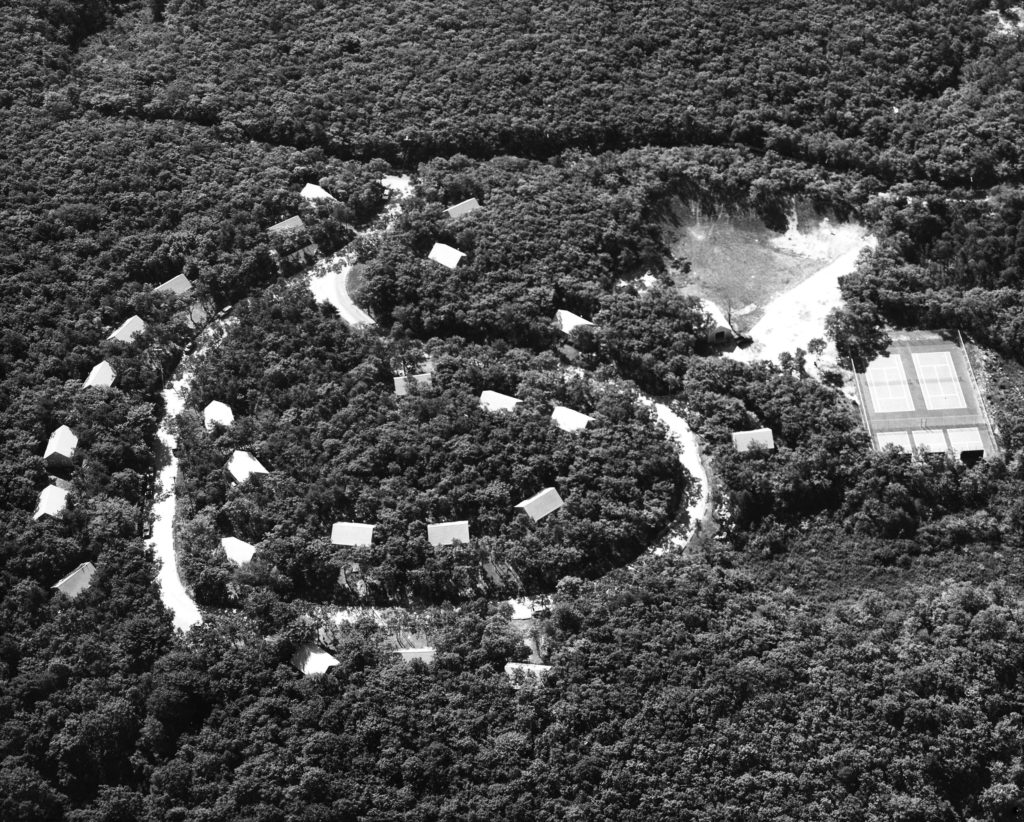
Wickliffe Rose, who served as director of both the IEB and GEB, on his 1925 tour of oceanographic institutions, conducted interviews with their leadership. In the years preceding Rose’s tour, the IEB had provided grants to individual investigators of marine biology and fish culture, including researchers at the Marine Biological Laboratory (MBL) at Woods Hole, Massachusetts. The $500,000 grant from the Rockefeller Foundation in 1922 had been particularly instrumental. “Marine Biological Laboratory – Woods Hole,” Rockefeller Foundation records, RG 1.1, Series 200, Rockefeller Archive Center. See also, “Oceanography.” The Rockefeller Foundation. A Digital History. Rockefeller Archive Center, 2013.
From Economic Interests to Scientific Study
That March, Rose visited the Bureau of Fisheries, known today as the US Fish and Wildlife Service. Willis F. Rich, who oversaw the Bureau’s scientific work, and Lewis Radcliffe, the Bureau’s Acting Commissioner, discussed America’s vested interest in the fishing industry. This economic interest meant that oceanographic research had inevitably been geared mostly toward applied use issues in fisheries.
The Bureau had various projects underway, including studies of the oyster industry on the Atlantic seaboard and research into problems with fish propagation. The interview revealed numerous issues threatening resources, including a depletion of fisheries in the North and Baltic Seas.
This, paired with European advancements in fishing technology leading to overfishing, posed a threat to US resources, which the Bureau set out to protect.
More to Oceanography than Fisheries
Although such problems were of utmost importance to the Bureau, the discussion explored another intriguing notion: that the prioritization of fisheries had perhaps led to a deficit in other areas of oceanographic research.
Furthermore, biologists researching other issues had mostly worked in isolation on targeted projects. There had been minimal collaboration with other institutions studying similar or related subjects. This resulted in piecemeal findings among institutions — findings that would have more impact if examined more holistically.
A Field Needs Organization and Collaboration
With the ocean science’s limitations at the time, Rich and Radcliffe deemed the isolated findings as consequently “inadequate.” Yet their vision for international cooperation was not yet feasible.
In fact, it seemed daunting to create a comprehensive, interconnected program even within the US alone. “It would be extremely difficult for the Government Bureau to bring about proper international cooperation,” Rose recorded. “The Bureau has found it difficult even to bring about cooperation on the part of all classes of workers in this country.”“Wickliffe Rose,” International Education Board records, Series 1.1, Rockefeller Archive Center.
The Consequences of Working in Isolation
Other institutions were also aware of the detriments of overly isolated research. A few months after his interview with the Bureau, Rose interviewed T. Wayland Vaughan, the director of the Scripps Institution.
Vaughan echoed the concerns about the overly exclusive concentration on fisheries and the financial support that was solely focused there. He noted that problems in fisheries could not be solved effectively without greater knowledge of the oceans more broadly, and offered that little was being done in regard to physical oceanography in the United States.
Miscellaneous information in the field of physical oceanography has been collected as an incident to studies of special fisheries problems. No scheme has ever been matured for a thorough-going study of any part of the ocean off our own coasts.
Interview with T. Wayland VaughanInternational Education Board records, Series 1.1, Rockefeller Archive Center.
An International Plan for Oceanographic Research in the Pacific
Like Rose, Vaughan emphasized the need for international collaboration as well as the need for a comprehensive plan for studying oceanography within the US. The next step, Vaughan suggested, was to concentrate on the Pacific Ocean bordering the US and Canada.

This strategic move would benefit both countries and required a thorough plan that would continue to mature with cooperative efforts. Vaughan envisioned a similar model for the Atlantic and Gulf coasts. His idea was to map out areas for study and divide them into working units.
Vaughan noted that each unit should have a plan showing the exact information to be collected, such as tides, temperatures, salinity, and “cross-sections here and there of life in certain restricted regions with its chemical physical conditions.” Bringing such a plan to fruition would involve the cooperation of scientists across various sub-fields. Until the point that such a plan could be implemented, however, studies would inevitably be independent.
The “Ooze at the Bottom of the Sea”
Vaughan posed an anecdote about the “ooze at the bottom of the sea” that perhaps best explains the need he saw for scientific collaboration:
In this ooze one finds geology in the making. While the bottom of the sea is being formed, the chemical and biological processes going on are throwing off by-products, which determine the character of the water and therefore the food supply of the plankton and the higher forms of life which in turn feed upon the plankton. Such a study is highly technical and calls for cooperation of geologists, physicists, chemists, and biologists.
Interview with T. Wayland VaughanInternational Education Board records, Series 1.1, Rockefeller Archive Center.
Staying the Course while Building a New Program
Despite the piecemeal nature of specialized studies, Vaughan expressed his desire that the IEB would nevertheless continue to provide aid to individual investigations in hopes that they might eventually fit into a larger research plan. To end isolated studies because of their relative inadequacy, even temporarily, ran the danger of creating too large a deficit to recover from later.
Oceanography Coast to Coast
Currents in national collaboration were underway, pushing the field forward. In April 1927, the National Academy of Sciences established the Committee on Oceanography, of which Vaughan was a member. The committee would assess US interests “in a worldwide program of Oceanographical Research.”
One month later, the GEB funded the committee’s investigations with $75,000, and the committee returned in 1929 with a proposal for a Central Atlantic Oceanographic Station, a project that would come to fruition and is known today as the Woods Hole Oceanographic Institution. In early 1930, the Rockefeller Foundation provided the new institution with $1 million for building construction, $1 million toward its endowment, and $50,000 annually for ten years’ worth of expenses — a grant altogether totaling $2.5 million (almost $15 million in 2020 dollars).“Woods Hole Marine Biological Laboratory, “General Education Board records, Series 1.2, Rockefeller Archive Center.
While the grant to Woods Hole was impressively large, and provided an essential cornerstone, the nitty-gritty work of building the field also took place at a diverse group of institutions across the US and globally. Smaller, lesser-known grants helped to foster a lasting network which has been crucial in enabling oceanography to evolve from a young science focused mostly on the applied-use issues of fisheries into a more sophisticated, holistic basic science.
Smaller Grantees Cohere into an Emerging Network
Through careful selection of its grantees, the Rockefeller Foundation slowly but surely promoted a more collaborative research approach. Grantees fit into a larger strategic picture engineered by the RF. For instance, the University of Washington required the construction of a new laboratory on Lake Union. Funding this laboratory was compelling in part because it would be located near the existing laboratories of the International Fisheries Commission and the US Bureau of Fisheries.
Such funding strategies promoted collaboration among nearby institutional laboratories that would better utilize their respective resources. It also addressed the need for more biological stations in the Pacific Northwest, a geographical area that zoologist Frank R. Lillie had urged the RF to pursue for its “great natural advantages.”
Lillie’s credentials and networking abilities were strong. A member of the National Academy of Sciences committee, he also served as the director (and later trustee) of the MBL, and headed the Department of Zoology at the University of Chicago. Lillie played a critical role in the Rockefeller Foundation’s decision to support oceanography on a larger scale.
Lillie’s 1928 letter to the RF posed a convincing argument for funding the University of Washington project:
We are a state university, it is true. The Foundation has not been inclined to look with great favor on state-controlled institutions… it seems to us that there is not an institution in the country more deserving of encouragement in its efforts at research work… We have a body of earnest scholars who are chafing under the handicaps they have to hurdle in order to do their studies.
Frank R. Lillie“University of Washington – Oceanography,” Rockefeller Foundation records, Projects, RG 1.1, Series 253.D, Rockefeller Archive Center.
In 1930, the same year it funded the new Woods Hole Institute, the RF made a $250,000 grant for the University of Washington’s new laboratory, equipment, and research vessel.
New Waves in Oceanography
Meanwhile, Rose’s travels to various institutions in the United States revealed the need for support on an international scale. One marine biological station in particular caught the RF’s attention – the Naples Zoological Station (NZS) in Naples, Italy.
In the European context, the NZS was regarded as an important institution on par with Woods Hole and Scripps in the US. Founded by German zoologist Anton Dohrn, this independent research institute provided facilities, equipment, animal and plant material, as well as a library, to scientists interested in marine biology, experimental embryology, and oceanography.
Over the period of 1924-1931, the IEB granted funding for the station’s continued research. Until then, most of the station’s funds had been derived from research table rentals, aquarium fees, government grants, and various smaller international organizations. Between 1932 and 1955, the RF continued the funding that the IEB had begun, providing additional grants, including travel grants to Austrian and German scientists to visit the station in 1949.
In the years following World War II, NZS regularly hosted research scientists from Austria, Belgium, Denmark, France, Germany, England, the United States, the Netherlands, Sweden, and Switzerland. The station’s reach continued to grow, as did the national and international collaborations it launched with various institutions.
A Robust Field Requires a Repository of Knowledge
However, in 1955, the NZS came up against a pressing matter regarding its greatest asset: its library. Like the Marine Biological Laboratory at Woods Hole, NZS owned a comprehensive collection of books, journals, and reprints on marine biological subjects, upon which researchers relied.
The library was housed in former research laboratories in the main building of the station, holding 40,000 volumes of over 200 scientific periodicals, and over 35,000 unbound reprints. The library contained so many materials that a survey showed that only 4% of shelf space remained unused and available.
The building was not originally designed for the weight of these volumes, which were pushing the limits of its structural supports. Peter Dohrn, the station’s director and son of the institute’s founder, contacted the Rockefeller Foundation to request assistance in the library redesign project.
Protecting a Treasure Trove of Oceanographic Resources
The project was costly, yet urgent. It required the construction of a new building for the library and the conversion of the existing library space back into much-needed laboratories. Stressing the institute’s significance and the dire need for this project, Dohrn wrote:
It must be said that unless some substantial aid and very sincere efforts are done about our 80-years old library for marine biology, which has an 82-years old zoologist as library assistant to look after it […], the efficiency of the service to scientists is in danger.
Peter Dohrn’s letter to Dr. Gerald R. Pomerat“Zoological Station of Naples – Dohrn, Peter,” Rockefeller Foundation records, Projects, RG 1.2, Series 300, Subseries 751.D, Rockefeller Archive Center.
In January 1957, the RF provided the remaining 50,000,000 Italian lire (approximately $85,000 US dollars) necessary for the project’s completion. The Foundation recognized the station’s contributions as an international center. Moreover, the new library proved to be a scientific hub and a gateway to past and future findings.
Today, the NZS continues to operate as a world-renowned marine biological research station. It has earned a reputation as a melting pot for scientific inquiry, bringing an international cadre of researchers and their findings together in much the way that the early visionaries, Vaughn, Lillie, and Rose, had hoped for.
Following its early burst of support in the 1930s, the RF discontinued programs of institution-building in oceanography and concentrated its future funding on research. Oceanography fit particularly well into Warren Weaver’s emphasis on interdisciplinary approaches to the biological sciences. Although never a large area of research funding, oceanography remained a key interest of the Foundation, and grants for research at the institutes the RF had long funded, like the Woods Hole Oceanographic Institute, continued into the early 1970s.
Never again did it fund capital projects in the field, but it did continue to promote a robust research agenda and to support its stable of grantees. In 1954, around the same time it was helping the NZS to reconfigure its library, the RF made a $1 million grant to the Scripps Institution for an expanded program of faculty hiring and marine biological research. Today, Scripps, the Woods Hole Institute, and the NZS remain leading institutions. And, in 2018, the University of Washington’s School of Oceanography was ranked number one in the field worldwide.
Research This Topic in the Archives
Explore this topic by viewing records, many of which are digitized, through our online archival discovery system.
- “Fisheries,” 1923-July 1925. International Education Board records, Appropriations, Series 1, Numerical, Subseries 1, Rockefeller Archive Center.
- “Fisheries,” 1924-1926. General Education Board records, Appropriations, Series 1, Secondary and Higher Education Subseries 1.2, Rockefeller Archive Center.
- “Oceanography,” 1927-1954. General Education Board records, Appropriations, Series 1, Secondary and Higher Education, Subseries 1.2, Rockefeller Archive Center.
- “Central Atlantic Oceanographic Station,” 1929-1942. Rockefeller Foundation records, Projects (Grants), Record Group 1, Subgroup 1.1, United States, Series 200, Natural Sciences and Agriculture, Subseries 200.D, Rockefeller Archive Center.
- “Marine Biological Laboratory – Woods Hole,” 1921-1926. Rockefeller Foundation Records, Projects (Grants), Record Group 1, Subgroup 1.1, United States, Series 200, Natural Sciences and Agriculture, Subseries 200.D, Rockefeller Archive Center.
- “University of California – Microbiology – (ZoBell, Claude E.),” 1951-1956. Rockefeller Foundation Records, Projects (Grants), Record Group 1, Subgroup 1.2, United States, Series 200, Natural Sciences and Agriculture, Subseries 200.D, Rockefeller Archive Center.
- “University of California – Oceanography – (Scripps Institute of Oceanography),” 1952-1959. Rockefeller Foundation Records, Projects (Grants), Record Group 1, Subgroup 1.2, United States, Series 200, Natural Sciences and Agriculture, Subseries 200.D, Rockefeller Archive Center.
- “University of Washington – Oceanography – Reports,” 1928-1932. Rockefeller Foundation Records, Projects (Grants), Record Group 1, Subgroup 1.1, Washington, Series 253, Natural Sciences and Agriculture, Subseries 253.D, Rockefeller Archive Center.
- “University of California – Marine Biochemistry,” circa 1905-1980. Rockefeller Foundation records, Photographs, California, Series 205, Natural Sciences and Agriculture, Subseries 205.D, Rockefeller Archive Center.
- “University of Washington – Oceanography,” circa 1905-1980. Rockefeller Foundation records, Photographs, Washington, Series 253, Natural Sciences and Agriculture, Subseries 253.D, Rockefeller Archive Center.
The Rockefeller Archive Center originally published this content in 2013 as part of an online exhibit called 100 Years: The Rockefeller Foundation (later retitled The Rockefeller Foundation. A Digital History). It was migrated to its current home on RE:source in 2022.

